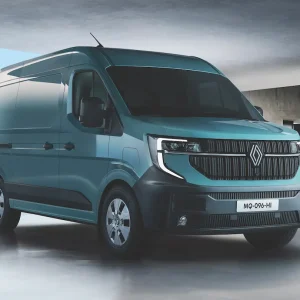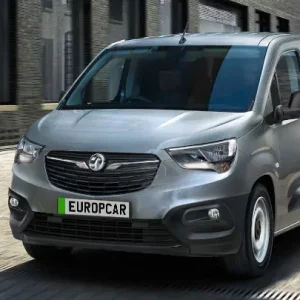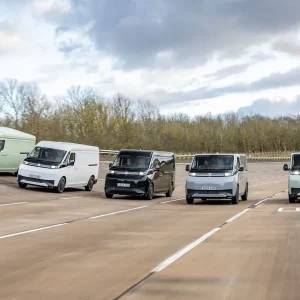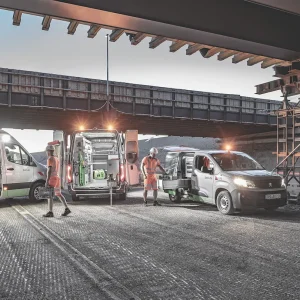The Citroen Berlingo and Peugeot Partner vans have been sharing a platform for more than 20 years, producing two generations together and selling more than two million units worldwide.
On 2 January 2019 the third generation of PSA Peugeot-Citroen’s light van will launch in the UK, but the latest model will also bring a third member to the partnership.
Vauxhall will join the collective, and for the first time the UK-based manufacturer will be able to offer its Combo van as a passenger carrier.
For all three brands the ability to offer a well-packaged and compelling passenger version in September – giving an insight into what the van models will be like when they arrive early next year – is important as the additional sales from the retail sector can help significantly with shifting production volumes.
People-moving versions of the Citroen Berlingo Van will simply be called the Citroen Berlingo, the Peugeot Partner van is renamed the Peugeot Rifter, while the Vauxhall Combo van becomes the Vauxhall Combo Life.
Like the vans, each of the brands has its own interpretation of what it sees as the ideal model to represent its core values.
That means there are some subtle and some major differences between the models. Each has a radically different front end, virtually making them indistinguishable as joint-venture products, but there are also large changes to the inside with different specifications, layout and features across the three.
A similar undertaking has been made with the vans, but it’s more evident in the passenger car versions, and even extends to changes under the skin – something the light commercial vehicles will not get.
Sizes
As with the vans, the cars will be available in two sizes, adding 350mm to the length of the vehicle.
Citroen, curiously, calls them M and XL, Peugeot Standard and Long, while Vauxhall simply refers to the larger one as XL. The increase comes in the shape of a wheelbase extension and a larger rear overhang and results in an additional two seats in the back of the car.
The smaller vehicle has space for five, with three individual rear seats, while the XLs add another two into a third row that can be moved forward or backward or removed altogether while the middle row can be folded into the floor. As a family car, access to the middle seats is particularly important. Here, the vans’ sliding side doors make a decent aperture while the hinged tailgate provides rear access. There’s also the option of an opening rear window in the tailgate for even quicker access.
A noticeable difference between van and passenger car is the availability of a rooftop storage tray that adds up to 92 litres of space to the interior. The transparent rib runs from front to back and not only allows light from the panoramic roof into the cabin, but provides convenient overhead stowage.
In the vans the large 8in touchscreen isn’t a standard feature, but for the cars it’s only the base-level Peugeot Rifter Active that does without. For all other trims, which include the Berlingo Feel and Flair, Rifter Allure and GT Line, and Combo Life Design and Energy, the tablet-like screen is included.
There are certain brand-specific changes made to the interiors – for example, the Berlingo includes a head-up display first seen on the Citroen Dispatch mid-sized van. This will now be available on Flair model people-movers and as an option on all but the base-level vans.

Inside the Combo Life
Formally known as the Peugeot Partner Tepee, the Rifter’s cabin is entirely different to its siblings.
While the Berlingo and Combo vans make do with the same interior, albeit modestly altered to fit the specific requirements of each brand and its customers, Peugeot has slotted in its own family values into both the car and van versions.
Based on the EMP2 (Efficient Modular Platform), which is used across the Peugeot and Citroen car ranges, it’s the iCockpit interior that helps the Rifter stand apart. Just like the van variant, the Rifter has a unique interior similar in design and carried over from the Peugeot 3008 and 5008 crossovers cars. At first glance, the cabin is very different to the Berlingo and Combo, but when you settle in it’s really just the area immediately ahead of you that is altered.
From the driver’s seat in all models there is excellent forward visibility thanks to the large windscreen, while the short overhang and more upright front end makes manoeuvring easier.
It’s a huge step-change for a van, less so for a car, but according to Peugeot brand CEO Jean-Philippe Imparato it’s more than just an upgrade for the commercial vehicle-based Rifter. “It’s absolutely an MPV killer,” he says, and predicts the Rifter will shake up the sector. Imparato sees van-based people-movers as a significant contributor to Peugeot’s future sales.
Like the van, the Rifter interior is extremely driver-focused. A higher, narrower instrument cluster focuses the cabin towards the driver, while the flat-top and -bottomed steering wheel is positioned low, giving it a sportier feeling than in the Berlingo. Peugeot says it has deliberately tuned the car as well, making it more responsive and better to drive, whereas Citroen says its Berlingo car will be tweaked for comfort.
They’ve done a convincing job too, as back-to-back drives of all three models shows that the Peugeot really stands out with its feedback from the road, while the Citroen and Vauxhall are noticeably softer compared to the firmness of the Rifter. Pleasingly, though, all are surprisingly fun to drive, which bodes well for the van versions.
Citroen’s Berlingo vans are known for their XTR grip control, allowing electronically managed off-roading over surfaces like gravel and mud, and in the new models that system has been enhanced with a Hill Descent Assist function.
This option translates over into the commercial vehicle with new work-specific option packs that better tailor the van towards construction and off-road usage or, at the other end of the spectrum, long-distance delivery users.
All three models use the same set of engines, with a 1.2-litre turbocharged petrol engine developing 110hp beginning the range and two options for the 1.5-litre turbodiesel of 100hp or 130hp.
Both of the diesel units are Euro6.2-compliant, although in the commercial vehicles there is a third engine option of a 1.6-litre turbodiesel with the same outputs that only meets Euro6.1 standards, which will be available for the first nine months of launch. The newer diesel is exceptionally quiet and with the highest power output is matched perfectly to the eight-speed automatic gearbox.
The petrol engine revs merrily, and as a passenger car will likely have many buyers, but with its commercial vehicle roots the gearbox feels more at ease with the diesel.
Lastly, and of huge importance to both passenger and increasingly commercial vehicle buyers, is safety. There is now an abundance of driver assistance systems available, with nearly 20 to either choose from or fitted as standard, including automatic electronic parking brake, park assist, traffic sign recognition, adaptive cruise control with stop function, and active safety brake.
As is often the way, passenger versions of commercial vehicle-based products are getting launched earlier into the market than their load-carrying equivalents. While many manufacturers do little to separate the two product lines, Peugeot-Citroen/Vauxhall have not only gone to great lengths but capably achieved significant diversification between the ranges and products.
It’s all exceptionally good news for prospective buyers of the new Berlingo, Partner and Combo vans though, as with such attention to detail being paid the resulting commercial vehicles should hold up very well. We will find out next month, when we drive them for the first time.
George Barrow is UK judge for the International Van of the Year, the prestigious prize awarded by leading European LCV journalists





